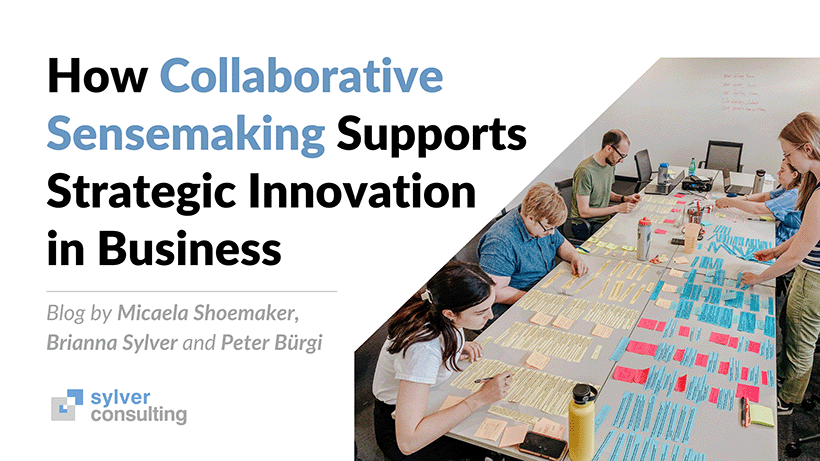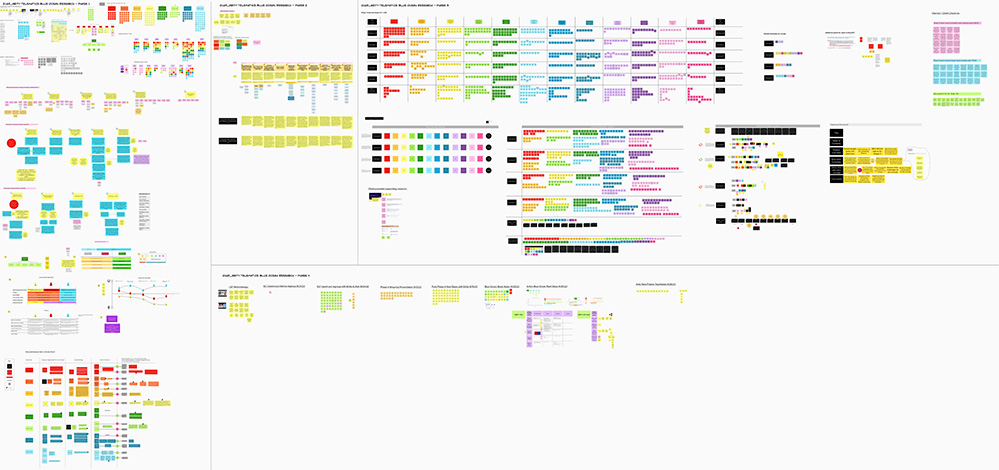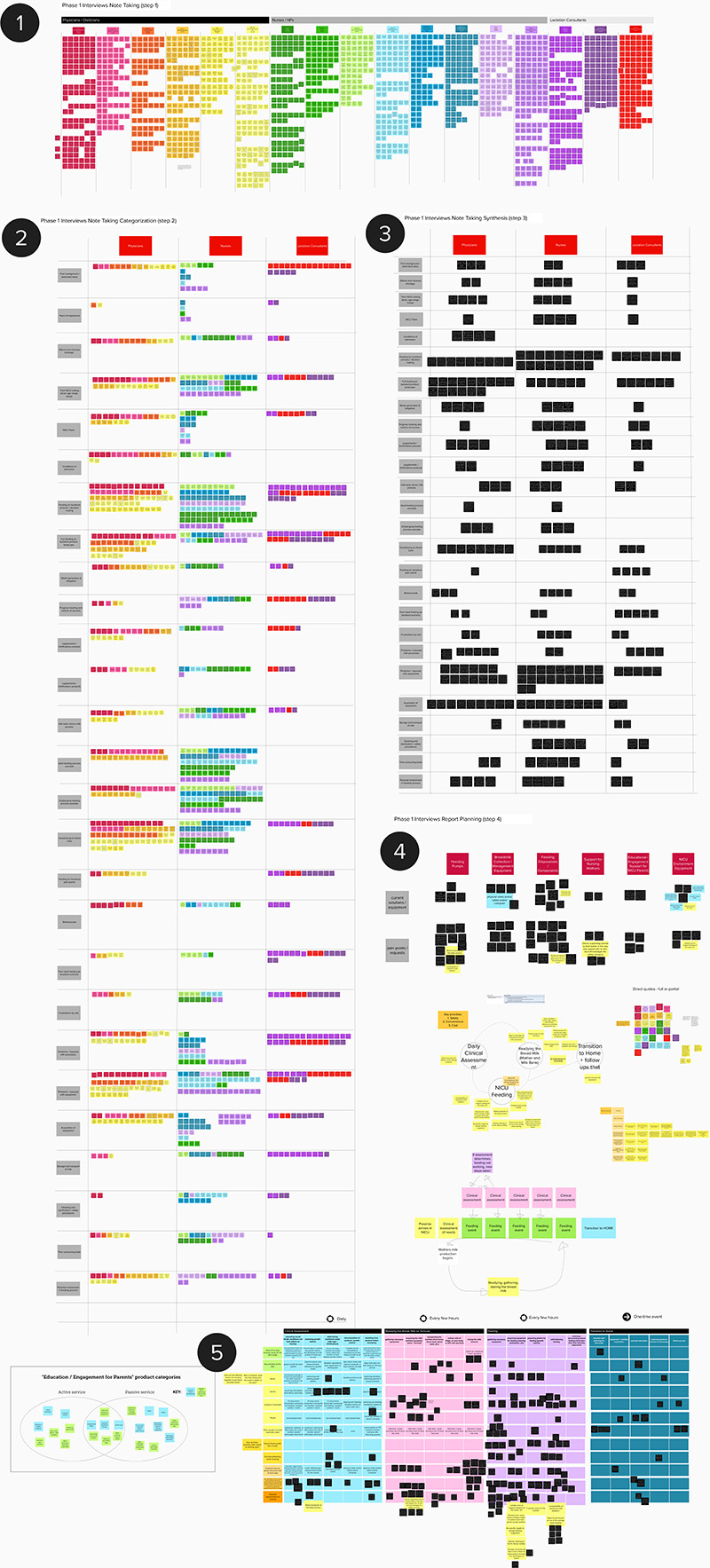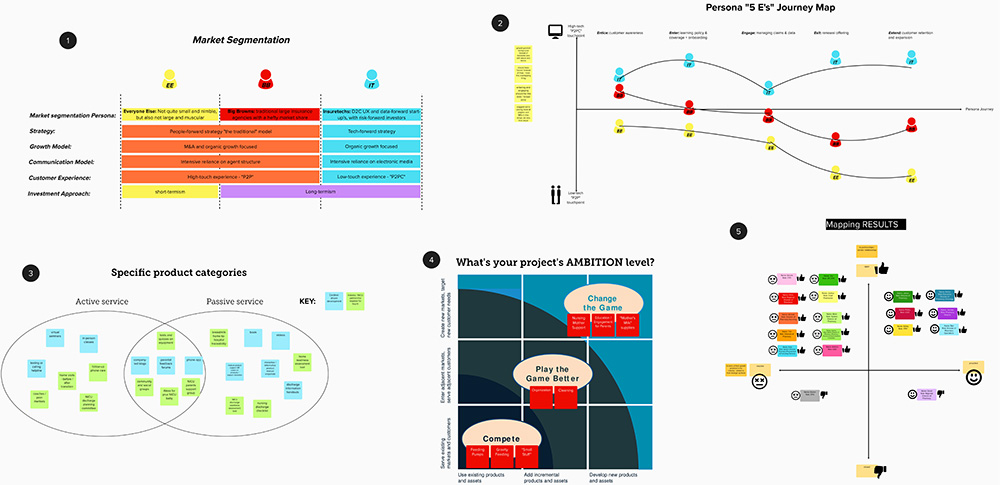
Practices
How Collaborative Sensemaking Supports Strategic Innovation in Business








However, traditionally, this has been a key workshop that we do exclusively internally within Sylver. We have not invited clients into the sensemaking process with us … until recently. And, now that we have … wow! The results have been powerful!
A Sensemaking Session is a workshop that takes place during a research project, immediately after data collection has concluded. It happens before any major project analysis is done and before a report is generated.
The goal of the Sensemaking Session is to make preliminary sense of what we’ve heard in the research, related to the strategic decisions that our clients are looking to make as a result of the research.
We come together, not to be mired in the weeds of the data, but rather to gain perspective on the “so what?” implications of what we have learned in the research.
The session serves as a key transitional moment between fieldwork and deep analysis for the project. Ideally, this session also takes place in-person to achieve the highest immersive impact.
Leading up to the workshop, the Research Lead managing the project conducts a “light” analysis of the data, organizing the data with high-level summaries of the main themes and findings that emerged during the fieldwork.
This summary of findings is shared out during the Sensemaking Session and acts as a jumping off point for the conversation. What follows is a rich and focused dialogue about the deeper, strategic implications of the learnings for the client organization.
We initially brought clients into the Sensemaking Session as a way to mitigate timing or budgetary constraints. Practically speaking, if a client’s project stops at the Sensemaking Session, we can usually shorten the project’s timeline by 2 - 3 weeks and the overall expenses by a significant chunk.
Yet, what we’ve discovered is the amazing power of this workshop in fostering greater collaboration and alignment on research outcomes, across all clients—even the ones that we eventually create a full, standard strategic deliverable for. Simply put, client teams that participate in a Sensemaking Session amp up their ability to have real impact on their organization.
When this session is done internally by the Sylver team, it serves the purpose of finding the larger strategic “story” embedded in the data. It’s the point at which our research findings turn into actionable insights.
When clients are brought into the process, however, they play an active role in the data analysis, creating an immersive, high-impact learning experience for them. They arrive at the “aha” moments in the data themselves, and as a result become more articulate and committed evangelists for ensuring the ROI of the research for the organization. In other words, they have full skin in the game to drive the strategic innovation implications of this work for their organization, in ways that receiving a standard report out of a research deliverable does not achieve.
The client team walks away from this session with an understanding of the initiative’s most salient insights and an aligned perspective on what the implications of those insights are to the next step business decisions the team needs to make.
Willingness to deeply engage in the process is what makes a Sensemaking Session valuable to a client. This means that at least one key representative from the client team (but ideally more) should have the bandwidth to observe as much of the fieldwork as possible.
Although a summary of the data is developed and shared by Sylver at the outset of the Sensemaking Session, it’s important for the client team to be at least somewhat familiar with the data so that they can come prepared to the session ready with thoughts and ideas to contribute.
Whether clients are involved or not, Sensemaking Sessions are critical components in almost all of the work we do at Sylver. It can be paired with both qualitative and quantitative methodologies including (but not limited to) surveys, IDIs, online discussion boards, and focus groups.
However, when clients are engaged in the process, this approach is particularly well-suited for refining go-to-market strategies, identifying gaps in products/services, and articulating value propositions.
Micaela Shoemaker is a driven and endlessly curious design researcher. Her knack for fine details, pattern recognition, and organization allow her to find the order in the chaos—whether that be making sense of large datasets or managing the many moving parts of complex projects. She has a hand in all phases of qualitative research including client management, moderation, data analysis, synthesis, and reporting. Micaela holds a B.A. in Mass Communication & Media with a focus on digital audience strategy from Arizona State University. 
Brianna Sylver is the founder and President of Sylver Consulting. She focuses on helping clients identify, create and execute on their visions for growth. An innovation strategist and worldwide speaker, educator, and facilitator of innovation process, Brianna has a reputation in the industry as an “innovation leader within the innovation movement.” She holds a BFA in communication design from the University of Buffalo and a master's degree in human-centered communication design and design strategy (MDES) from the Institute of Design at IIT. 
Peter Bürgi is an anthropologist with extensive business knowledge. Peter is a project lead experienced in qualitative market and organizational research, design/facilitation of workshops and ideation retreats, and consultation on intercultural and corporate culture issues. His background includes working as Vice President at Research International/TNS and at Beall Research, Inc. He has conducted market research, organizational research, and consulting projects for nearly 25 years on four continents. He is Sylver Consulting's Senior Director. 
How Sylver Consulting Helped PineMelon Level Up Their Go-to-Market Strategy
What is LEGO® SERIOUS PLAY® and How Can It Help Tune Your Strategy?
Reach out to set up a free discovery call. On this call, we’ll get clear on your scope of work to be tackled, how your initiative ladders to a broader business goal of your organization, and assess — without attachment — if Sylver Consulting is a “best fit partner” to support you in your scope of work.
Tel:
+1 (312) 239-0346Fax:
+1 (773) 304-2709


